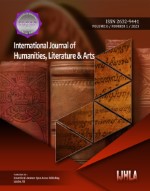Dharmaning ksatrya leadership in santi work culture formation
Keywords:
bureaucracy, leadership, philosophy, politic, santi work cultureAbstract
This study analyzes Hindu leadership based on the values ??of Puputan Klungkung's war struggle with the spirit of dharmaning ksatrya as a form of tindih and wirang which is implemented in forming a polite and innovative work culture of bureaucratic organizations to create a superior and prosperous Klungkung society. Dharmaning ksatrya leadership is a Hindu leadership value based on dharma as philosophy and pesaja as ethics in improving bureaucratic performance. The process of forming a santi work culture in the Klungkung Regency Government is carried out in stages and continuously. Starting with the significance stage (discussing changes in the socio-cultural work of the bureaucracy) followed by aspects of domination (control of political and economic resources) and legitimacy with the enactment of a Klungkung Regent Regulation No. 14 of 2021 concerning the Code of Ethics for State Civil Servants of the Klungkung Regency Government.
Downloads
References
Bulkeley, H. (2005). Reconfiguring environmental governance: Towards a politics of scales and networks. Political geography, 24(8), 875-902. https://doi.org/10.1016/j.polgeo.2005.07.002
DeJoy, D. M. (2005). Behavior change versus culture change: Divergent approaches to managing workplace safety. Safety science, 43(2), 105-129. https://doi.org/10.1016/j.ssci.2005.02.001
Efendy, M. R. (2021). Motif Atlet Dari Keluarga Miskin Dalam Menekuni Olahraga Hockey Di Kota Surabaya. Paradigma, 10(1).
Elkins, T., & Keller, R. T. (2003). Leadership in research and development organizations: A literature review and conceptual framework. The leadership quarterly, 14(4-5), 587-606. https://doi.org/10.1016/S1048-9843(03)00053-5
Gallagher, S. (2000). Philosophical conceptions of the self: implications for cognitive science. Trends in cognitive sciences, 4(1), 14-21. https://doi.org/10.1016/S1364-6613(99)01417-5
Giddens, A. (1995). Human societies: an introductory reader in sociology. Polity Press.
Gunada, I. B., & Sukarma, I. W. (2012). Aneka Politik Hindu. Denpasar: Widya Dharma.
Hillman, A. J., Keim, G. D., & Schuler, D. (2004). Corporate political activity: A review and research agenda. Journal of management, 30(6), 837-857. https://doi.org/10.1016/j.jm.2004.06.003
Meganada, I. W., Yasa, W. S., & Utama, W. B. (2020). Architecture various forms of sanggah kemulan taksu in Denpasar. International Journal of Humanities, Literature & Arts, 3(1), 32-40. https://doi.org/10.31295/ijhla.v3n1.153
Nashir, H. (2012). Memahami Strukturasi dalam Perspektif Sosiologi Giddens. Jurnal Sosiologi Reflektif, 7(1), 1-9.
Nufus, A. N. A. (2019). Teori Strukturasi: Habitus dan Kapital dalam Strategi Kekuasaan (Studi Kepemimpinan Perpustakaan Universitas Islam Indonesia Yogyakarta). LIBRIA, 11(2), 11-28.
Provan, D. J., Dekker, S. W., & Rae, A. J. (2017). Bureaucracy, influence and beliefs: A literature review of the factors shaping the role of a safety professional. Safety science, 98, 98-112. https://doi.org/10.1016/j.ssci.2017.06.006
Ridha, M. (2020). Teori Motivasi Mcclelland Dan Implikasinya Dalam Pembelajaran Pai. Palapa, 8(1), 1-16.
Rosliana dkk, “Peran Kepemimpinan Dalam Menumbuhkan Inovasi Sektor Publik di Kabupaten Kulon Progo”. Bunga Rampai Administrasi Publik, PIPEL-LAN, 2018.
Rosliana, L. (2018). Omotenashi: Budaya Keramahtamahan di Jepang (Akar Budaya dan Manifestasinya). KIRYOKU, 2(3), 135-142.
Sarkar, S. (2014). Environmental philosophy: From theory to practice. Studies in History and Philosophy of Science Part C: Studies in History and Philosophy of Biological and Biomedical Sciences, 45, 89-91. https://doi.org/10.1016/j.shpsc.2013.10.010
Sihotang, K. J. (2012). Struktur dan Kultur Dominasi: Relasi Agensi dan Strukturasi dalam Pembentukan Kultur Prajurit TNI Angkatan Darat pada Era Reformasi. Jurnal Sosiologi Reflektif, 8(2), 75-87.
Suryono, A. (2014). Kebijakan publik untuk kesejahteraan rakyat. Transparansi: Jurnal Ilmiah Ilmu Administrasi, 6(2), 98-102.
Suwaryo, U. (2010). Perubahan Sosial Dan Dinamika Pemerintahan. governance, 1(1), 21-31.
Suweta, I. M. (2020). Kepemimpinan Berdasarkan Dharma Dalam Teks Kakawin Brahmanda Purana. PARIKSA: Jurnal Hukum Agama Hindu, 3(2).
Tosun, J., & Howlett, M. (2021). Managing slow onset events related to climate change: The role of public bureaucracy. Current Opinion in Environmental Sustainability, 50, 43-53. https://doi.org/10.1016/j.cosust.2021.02.003
Van Knippenberg, B., Van Knippenberg, D., De Cremer, D., & Hogg, M. A. (2005). Research in leadership, self, and identity: A sample of the present and a glimpse of the future. The Leadership Quarterly, 16(4), 495-499. https://doi.org/10.1016/j.leaqua.2005.06.006
Yang, J. T. (2007). Knowledge sharing: Investigating appropriate leadership roles and collaborative culture. Tourism management, 28(2), 530-543. https://doi.org/10.1016/j.tourman.2006.08.006
Published
How to Cite
Issue
Section
Copyright (c) 2023 International journal of humanities, literature & arts

This work is licensed under a Creative Commons Attribution-NonCommercial-NoDerivatives 4.0 International License.
Articles published in the International Journal of Humanities, Literature & arts (IJHLA) are available under Creative Commons Attribution Non-Commercial No Derivatives Licence (CC BY-NC-ND 4.0). Authors retain copyright in their work and grant IJHLA right of first publication under CC BY-NC-ND 4.0. Users have the right to read, download, copy, distribute, print, search, or link to the full texts of articles in this journal, and to use them for any other lawful purpose.
Articles published in IJHLA can be copied, communicated and shared in their published form for non-commercial purposes provided full attribution is given to the author and the journal. Authors are able to enter into separate, additional contractual arrangements for the non-exclusive distribution of the journal's published version of the work (e.g., post it to an institutional repository or publish it in a book), with an acknowledgment of its initial publication in this journal.














